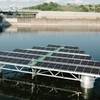The Bureau of Ocean Energy Management, Regulation and Enforcement (BOEMRE) has released a report on a bureau-funded study of new and more effective methods of predicting, detecting and mapping the occurrence of gas hydrates in deepwater environments.
The study, Multicomponent and Multifrequency Seismic for Assessment of Fluid-Gas Expulsion Geology and Gas Hydrate Deposits: Gulf of Mexico Hydrates, examined the various methods used to locate gas hydrate deposits. If such deposits occur in sufficiently high concentrations, they can be a potential new source of natural gas.
“This study is critical to furthering our ability to assess deepwater gas hydrates as a future energy resource,” said BOEMRE Director Michael R. Bromwich. “Finding the best and most effective way to gather essential data on these deposits will improve our ability to conduct better resource evaluations of methane hydrates.”
Gas hydrates are ice-like structures of water molecules that form cages surrounding methane gas molecules in deepwater environments. Hydrates are difficult to locate with the 2-D and 3-D technologies used for subsurface geological exploration. New technologies using four-component, ocean bottom cable to acquire multi-component seismic data have shown promise in locating these gas hydrate deposits. The findings of this study show that this multi-component seismic data could be more useful in locating hydrates than traditional seismic methods.
In addition, the study offered an unparalleled research opportunity to employ the new data set collected from a large area of the northern Gulf’s upper continental slope to provide a new enhanced imaging capability for the area.
BOEMRE funds on average $30m per year for scientific studies in the Gulf of Mexico, the Atlantic, the Pacific, and the Arctic. Data gained from these studies inform policy decisions regarding offshore oil, natural gas and renewable energy development.










